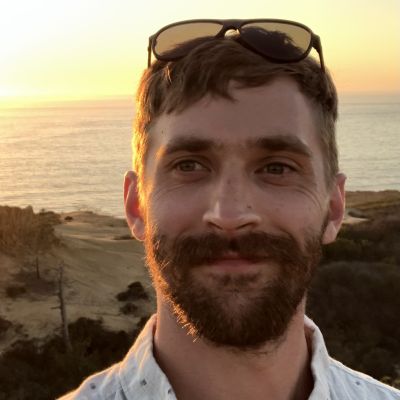ZTF Faces
This section features PhD students, postdocs and young faculty who are part of the global ZTF collaboration.
Zach Vanderbosch
Postdoc at Caltech, USA
Where was your starting point and how did you discover astronomy?
I'm originally from Charlotte, North Carolina and I probably started my path towards becoming an astronomer long before I even realized it. Largely thanks to my parents getting me outside to look at the stars and encouraging my interests in math and science, I started taking a serious interest in astronomy as a possible profession near the end of high school in 2009. Fortunately, this gave me the chance to choose UNC Chapel Hill for undergrad, since it was the only school I applied to that offered bachelor degrees in astronomy. I was also fortunate to meet Prof. Chris Clemens (former Caltech postdoc) at UNC, who provided me with amazing opportunities to break into the world of astronomical research and instrumentation. Fast forward to Fall of 2021, I got my PhD in astronomy from the University of Texas at Austin and started working at Caltech as a Postdoctoral Scholar.
How did you discover ZTF?
When ZTF came online during my graduate school years, I was curious to see just how powerful it was as a tool for identifying variable stars, and was blown away by the results. Now ZTF is a central part of my research, and I use it as one of the main discovery engines for the objects I'm interested in.
What are you playing with in the ZTF playground?
I primarily study white dwarfs with evidence for circumstellar planetary material, and white dwarfs that pulsate, rotate, or are in binary systems. Using the ZTF survey and detailed follow-up observations, I'm working on observationally characterizing the growing sample of white dwarfs being transited by planetary debris to place constraints on the physical processes governing late stages of planetary evolution, such as collisions, tidal disruption, and sublimation. To aid in this and quests for other variable stars, I am also working to develop techniques capable of distinguishing different types of variable white dwarfs using metrics based on current and future time domain photometric surveys, like ZTF and LSST.
Where do you want to steer your rocket in the future?
Though often difficult within academia, my goal in life is to always be doing research in a place that I would want to live, and Caltech/Pasadena definitely fill that criterion. As an astronomer, I’ve had the pleasure of doing some instrumentation development which helped keep my hands dirty. There is always a need for new instruments, and one of my goals is to one day design and build a new state-of-the-art instrument, perhaps one that is optimized for high speed time-series photometry in both optical (ugriz) and near-infrared (JHK) wavelengths simultaneously! From this we could learn a lot about the planetary material orbiting white dwarf stars, among other things.
If you were not an astronomer, what would you be?
I enjoy work that requires both mental and physical effort, and one of my favorite jobs outside of academia so far has been as a route setter at the Austin Bouldering Project, where I got to design and build indoor rock climbing problems for people to try. If I weren’t an astronomer, I’d definitely be a full time route setter while exploring some artistic endeavors on the side.
A book that shook your worldview?
Most of my worldviews have not been shaped by books but through my relationships with people, and I’ve met a lot of amazing people through the climbing community.
If you’ve had a bad day at work, you will….
Climbing till my arms feel like they’re falling off is also the number one avenue for me to release frustration following a bad day at work.
